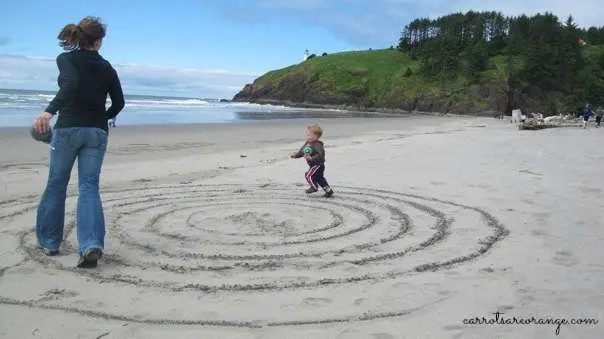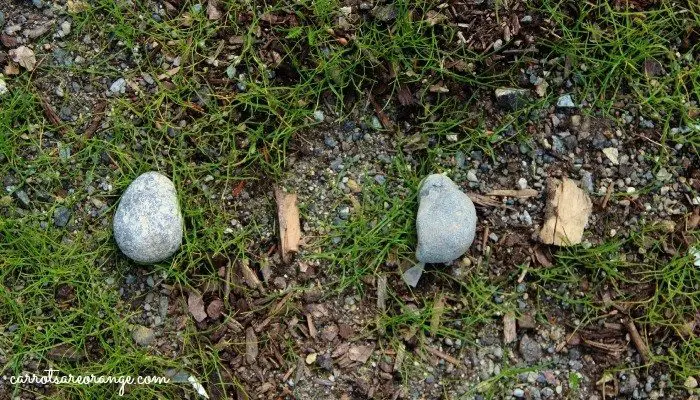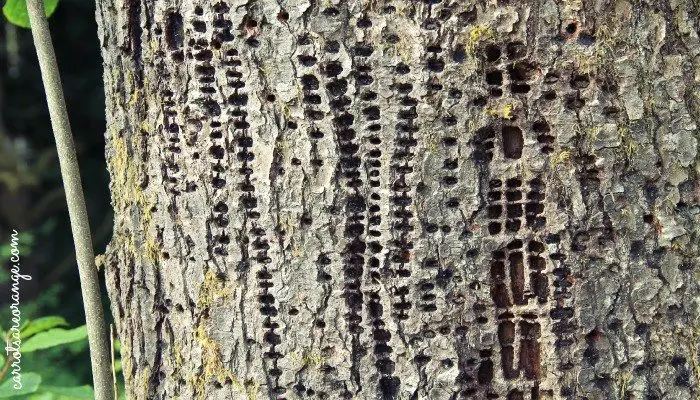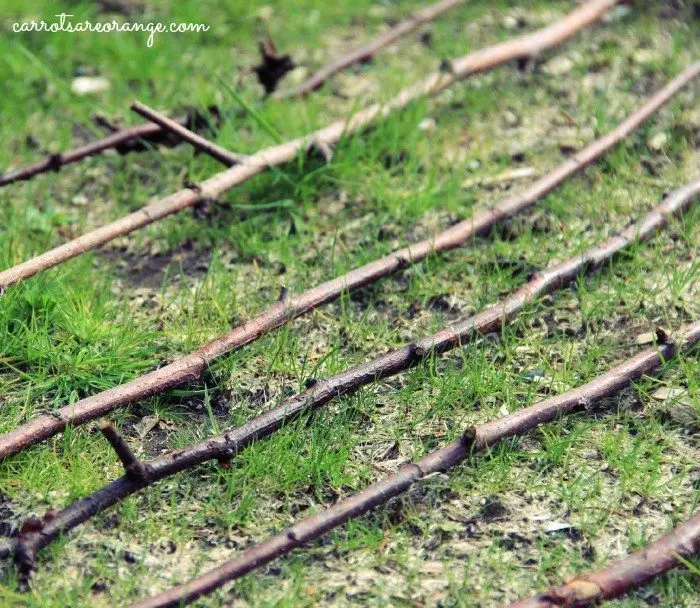I earn commissions from my affiliated links. Please see my disclosure policy for more details.
Dr. Montessori believed that educating the senses preceded intellectual development. A child’s education of the senses begins at birth. He takes impressions of his world through his senses.

Around 2.5 years old he enters a sensitive period for organizing these impressions. Much like the alphabet organizes language, the sensorial work organizes these impressions. This post includes Outdoor Montessori Activities for the Sensorial area of the classroom.

Montessori Sensorial Lessons Outdoors
The first phase of sensorial education begins at conception and lasts until 2.5-3 years of age. At this point, the child naturally acquires sensorial impressions from interacting with his environment. These experiences are the first step to begin making sense of his world.
The child takes everything in through his senses and, like with language, has an intense desire to create order and make sense of his environment. At first this learning is done unconsciously, but, as the child grows, this learning transitions to conscious learning.

Outdoor Montessori Activities for Sensorial
#1 – Pattern Making
This activity is open ended and full of opportunity. Children can take a variety of natural objects such as leaves, flowers, rocks, bark chips, twigs, and cones to create a myriad of patterns. Test one another. Take pictures and replicate on another day.
#2 – Geometric Solid Hunt
Children have a knack for creating and identifying 3 dimensional shapes in nature. Take a few sticks and you suddenly have a cube. See what you notice, then create your own shapes.
#3 – Red Rod Variation
Have the children collect ten sticks preferably from the same type of tree. Then place the various sized branches randomly on the ground with the shortest next to the longest for comparison. Remind them of the Red Rod lesson if they are familiar.
If not, demonstrate how to sort the sticks beginning with the shortest stick and building a stair from that point. Point out the shortest and longest. Emphasize how “big” the longest stick is, showing the child how he might consider carrying it since it is so long.
Keep in mind that this variation of the Red Rods won't be exact (base ten, for example), but you can isolate quality by keeping the sticks similar in type and ten different sizes.

#4 – Listening Walk
Begin this activity by having the children spend time in various “sitting spots” in your outdoors. After each session, encourage the children to describe the sounds they heard in that particular sitting spot, perhaps even noting it in a journal. Move to the next spot. Can they match a sound they heard at the last spot? Which sounds are different? Then go on a Listening Walk, using only ears to take in the experience.
Related Read: Montessori Sensorial Variations & Extensions for Knobbed Cylinders & Color Tablets

